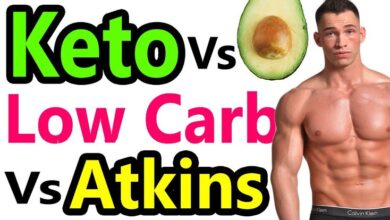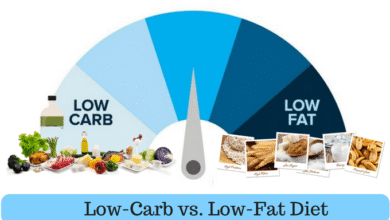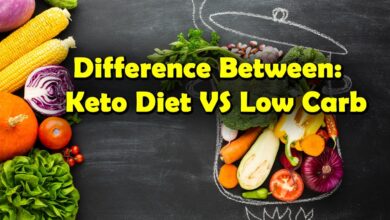
When you set out on a journey to lose weight, it often feels like stepping into a maze. Should you go Keto or stick with a Low-Fat strategy? The truth is, there is no one-size-fits-all answer, but there are ways to decide what may work best for you—and how to stick with it over the long haul. In this article, we’ll explore both paths, compare evidence, and help you tailor a plan that supports lasting results.
What Is “Long-Term Weight Loss” Anyway?
When we talk about “long-term weight loss,” we mean shedding fat and keeping it off for months or years—not just the next diet cycle. Many people lose weight in the short term, but few maintain it. True long-term success means your body adapts, your habits change, and your mindset shifts. Think of it like building a house, not stacking sand. The foundation must be strong, or everything collapses when life throws a curveball—stress, travel, illness, or change in routine.
Sustainable weight loss generally involves losing about 0.5% to 1% of your body weight per week and then adjusting to a maintenance phase where calories match your long-term energy needs. Rapid crash diets can cause muscle loss, metabolic slowdown, or rebound weight gain. Long-term means realistically fitting your plan into your lifestyle—nutrition, exercise, mental health, social settings, and consistency all play a role.
Read Also
Why People Choose Keto or Low-Fat (And Their Popularity)
Many of us latch onto a diet plan because it “sounds scientific” or someone we trust recommends it. Keto (very low carb, high fat) has surged in popularity in many parts of the US, Europe, and Africa thanks to stories of quick fat loss, appetite suppression, and improved metabolic markers. Low-fat diets, on the other hand, have decades of backing from institutions that once emphasized reducing dietary fat to fight heart disease.
In Africa, where staple carbs (rice, yams, cassava) are central, a low-fat diet might feel more familiar and socially acceptable. In Europe or the US, where processed foods and fats are ubiquitous, people may gravitate to keto to “fight back” against excess dietary fat intake. But popularity doesn’t equal durability. What matters is adherence—can you stick with it when life gets messy?
Critical Criteria for Long-Term Success
Before picking a side, here are the non-negotiables you must consider for anything to last:
- Sustainability / Adherence – The best diet is the one you can maintain.
- Nutritional adequacy – You must meet micronutrient needs (vitamins, minerals, fiber).
- Flexibility – Ability to adapt to travel, social meals, festivals, cultural foods.
- Metabolic health – Supporting insulin, cholesterol, blood pressure, etc.
- Behavioral tools – Habit formation, mindset, support, accountability.
If either Keto or Low-Fat fails on most of these, it won’t deliver durable results.
Understanding the Keto Diet
What Keto Means in Practice
A ketogenic diet typically restricts daily carbohydrates drastically—often under 20–50 g per day—while increasing fats (70-80% or more of energy) and keeping moderate protein. The aim is to push your body into ketosis, where it burns fat (and ketones) for fuel instead of glucose.
In practice, this means cutting out grains, many fruits, starchy vegetables, sugar, and processed carbs. You might eat meat, fish, eggs, cheese, oils, nuts, seeds, and low-carb vegetables like leafy greens. You often watch total caloric intake too, but many people report reduced appetite.
How Keto Affects Weight Loss Biologically
- Appetite suppression: Ketones and stable blood sugar reduce hunger spikes.
- Insulin regulation: Lower carb intake reduces insulin spikes, which might favor fat mobilization.
- Metabolic advantage (disputed): Some argue ketogenic metabolism is more “efficient” for fat loss—though evidence is mixed.
- Water loss: Early in the diet, you lose water weight (glycogen binds water), making early results dramatic—but not all fat.
Pros & Cons of Keto for Long-Term Goals
Pros:
- Many people report less hunger—making it easier to maintain a calorie deficit.
- Fast early results may boost motivation.
- For insulin-resistant individuals (e.g. prediabetes), keto may improve blood sugar control.
Cons:
- Restrictive: many socially eaten foods (bread, rice, desserts) are off the table.
- Risk of micronutrient deficiencies if not planned carefully.
- Long-term effects on lipid profiles or kidney function in some individuals remain uncertain.
- “Keto fatigue”: adherence can drop over time due to monotony or cravings.
Understanding the Low-Fat Diet
What Low-Fat Means in Practice
Low-fat diets typically limit fat intake to 20–30% (or lower) of daily calories. The idea is that fat packs 9 calories per gram, so reducing fat cuts a lot of calories. These diets emphasize whole grains, legumes, fruits, vegetables, lean proteins, and limit oils, fried foods, butter, fatty meats, nuts, and seeds.
In many versions, you can still consume substantial carbohydrates—rice, pasta, tubers, bread—so long as they’re mostly from whole-food sources.
How Low-Fat Affects Weight Loss Biologically
- Lower energy density: Fat has more calories per gram, so less fat means fewer calories per bite.
- Satiety via volume: High-carb foods with fiber (grains, vegetables) give volume and fullness.
- Insulin feedback: High-carb diets trigger more insulin, which can store fat; this is the main argument against high-carb in some people.
- Adaptation: The body may adapt to lower fat intake over time, influencing satiety hormones and metabolism.
Pros & Cons of Low-Fat for Long-Term Goals
Pros:
- More flexibility: many common staple foods are permitted.
- Easier social integration—rice, bread, sides, and many cuisines are carb-rich.
- Less need for supplementation (e.g. in many cases fiber, micronutrients are easier to meet).
Cons:
- Hunger issues: with more carbs, blood sugar swings might promote cravings, overeating.
- Overemphasis on low-fat processed foods (e.g. low-fat cookies) can backfire.
- In insulin-resistant individuals, high carb might be problematic.
- May require very high volume of food to feel full.
Comparative Evidence: What Studies Say
Short-Term vs Long-Term Trials
Short-term (3–6 month) trials often show keto outperforming low-fat in terms of weight loss. But once follow-up extends to 12 months or more, the differences often shrink or vanish. Some meta-analyses conclude both diets produce similar weight loss when calories and protein are matched.
One key issue is adherence. If someone can’t stick with keto long-term, its short-term superiority is moot. Some trials find dropout rates are higher for more restrictive diets.
Metabolic and Health Markers
- Keto often improves triglycerides, HDL cholesterol, and fasting insulin; but LDL cholesterol may rise in some individuals.
- Low-fat diets more consistently improve LDL cholesterol (lower it), but may not impact triglycerides as much.
- Blood pressure, inflammation markers, and insulin sensitivity often improve in both diets when weight is lost.
Individual Variation Matters
Genetics, insulin sensitivity, microbiome, hormone profiles, and food preferences all influence which diet may “respond” better. One person might flourish on keto; another might feel starved or rebellious.
How to Decide: Keto, Low-Fat, or a Hybrid?
Assess Your Insulin Sensitivity and Metabolic Health
If you have insulin resistance, type 2 diabetes risk, or high triglycerides, keto might offer advantage. But if you already have LDL issues or poor lipid tolerance, low-fat may be safer.
Look at Your Food Environment & Culture
If your local cuisine revolves around rice, beans, cassava, or other staples, radically cutting carbs may be socially tough. A low-fat plan with moderate carbs might integrate better.
Check Your Psychological Makeup
Do you thrive on structure or feel suffocated by rules? If rigid rules exhaust you, a more flexible low-fat or moderate-carb plan may serve better.
Test & Iterate
You don’t have to pick forever. Try a keto trial of 8–12 weeks, track how you feel, how your biomarkers respond, how sustainable it feels. Then compare with a low-fat period and see which gives better results and quality of life.
Hybrid approaches (e.g. low-carb but not fully keto, cyclical approaches) often combine the best of both worlds.
Designing a Sustainable Keto Plan
Macro Targets & Food Sources
- Carbs: ~20–50 g net per day (adjust per person)
- Protein: moderate, often ~1.2–2.0 g per kg body weight
- Fats: to fill remaining calories with healthy options—olive oil, avocado, fatty fish, nuts, seeds
Focus on nutrient-dense foods: kale, spinach, broccoli, cauliflower, eggs, salmon, sardines, grass-fed meats, high-quality oils. Supplement electrolytes (sodium, potassium, magnesium) because ketosis shifts fluid and minerals.
Meal Planning & Diversity
Plan 3–4 daily meals or 2 bigger meals—depends on hunger. Rotate vegetables and protein sources to avoid monotony. Use herbs, spices, flavor-building to keep meals enjoyable.
Refeeding / Carb Cycling (Optional)
Some folks insert higher carb days (e.g. on training or weekends) to replenish glycogen, support hormones, and psychological relief. But this must be done carefully to avoid derailing ketosis entirely.
Monitoring & Adjustments
Use body measurements, progress photos, energy levels, satiety scores, and blood/lab metrics (lipids, glucose, ketones). If fats your energy drops or cravings intensify, you may need more protein or slight carbs adjustments.
Designing a Sustainable Low-Fat Plan
Macro Targets & Food Sources
- Fat: ~20–30% of calories or lower
- Protein: moderate (approx 15–25% of calories)
- Carbs: make up the difference, emphasizing whole grains, legumes, starchy vegetables, fruits
Foods include oats, brown rice, beans, lentils, potatoes, whole wheat, fruit, lean poultry, fish, tofu, low-fat dairy, vegetables.
Emphasize Fiber & Volume
Fiber fills you without calories. Bulk your meals with vegetables, legumes, whole grains. Soups, salads, stir-fries can help fill stomach.
Limit Added Fats & Oils
Use cooking spray or minimal oil. Avoid fried foods, creamy sauces, heavy dressings. Occasionally include healthy fats (avocado, nuts) in moderation.
Meal Timing & Frequency
You can have 3–5 meals, snacks included, based on your hunger. Because carbs digest faster, you might benefit from more frequent smaller meals to avoid low energy or spikes.
Monitoring & Tweaks
Track satiety, cravings, energy, blood sugar (if relevant), and adherence. If you find you overeat carb meals often, you might bump protein or include a bit more fat.
Behavioral & Psychological Strategies for Long-Term Success
Mindset Over Motivation
Motivation fluctuates. Do you wait until you “feel like it”? That’s a trap. Build habits, routines, rituals—choose what you’ll do even when you don’t feel like it.
Small Nonlinear Wins
Celebrate small victories: 1 additional gym session, resisting one dessert, cooking a new healthy recipe. These build momentum.
Accountability & Social Support
Tell friends, join groups (online or local). Use apps or coaching. Accountability is a multiplier of success.
Habit Stacking & Environmental Design
Stack new behaviors onto existing ones (e.g. every time you brew morning coffee, you drink a glass of water). Clear your pantry of triggers. Keep prepared meals and healthy snacks front and center.
Tracking (But Don’t Obsess)
Weigh weekly (not daily), or use tape measurements. Log food initially to learn your portions, then simplify. Use apps or paper logs. But don’t let tracking become stressful.
Managing Setbacks and Plateaus
Expect plateaus. When progress stalls, don’t panic. Reassess calories, sleep, stress, non-exercise activity. Use deloads or small diet breaks. Don’t view mistakes as failures — treat them as data points and course correct.
Practical Tips for African, US & European Contexts
Africa
- Use local foods (yams, cassava, millet, sorghum, plantains) in low-fat focus or in limited quantity for keto-adapted dishes.
- Market availability: fats like avocado, palm oil, groundnut (peanut) oil are common.
- Social settings (funerals, festivals): plan ahead to bring a keto-friendly or low-fat option you can trust.
- Cost: fatty protein or specialty ingredients may cost more, so balance with legumes, eggs, seasonal produce.
United States / Europe
- Access to diverse low-carb products, keto breads, specialty flours—use them sparingly, not as crutches.
- Many restaurants can accommodate low-fat or keto requests—ask for sauces on the side, steamed vegetables, olive oil dressings.
- Food environment is “hyper-palatable” — guard against processed “low-fat” or “keto” junk foods. Focus on whole food.
Combining Keto & Low-Fat: Hybrid & Transition Approaches
You don’t have to be all or nothing.
Progressive Carb Reduction
Start with a moderate-carb, moderate-fat baseline. As you lose weight and adapt, gradually reduce carbs (but not to extremes) until you find a sweet spot you can sustain.
Alternating Phases
Some people thrive on phases: e.g. 12 weeks low-fat, 8 weeks low-carb; or seasonal shifts depending on activity levels. Just ensure you don’t shift too wildly, and adjust calories slowly.
“Carb-smart” Low-Fat
A low-fat plan combined with smart carb choices (low glycemic index carbs, fiber-rich carbs, spacing carbs away from high-fat meals) might mitigate insulin spikes more than a “bread and sugar” style low-fat diet.
Tracking Results & Adjusting Over Time
Metrics You Should Watch
- Body weight (weekly average)
- Body fat percentage or tape-measure changes
- Energy levels and mood
- Hunger and satiety
- Blood biomarkers (glucose, insulin, lipids, HbA1c)
- Sleep quality
- Energy expenditure (steps, non-exercise movement)
When to Adjust
- If weight loss stops for 4–6 weeks, reassess calorie intake or physical activity.
- If you lose strength or performance, maybe protein or carbs are too low.
- If blood biomarkers worsen, shift diet composition.
Adjust slowly—don’t swing wildly. A 5–10% calorie tweak or small macro shift is safer than radical overhaul.
Common Mistakes to Avoid
- Overrestricting too fast — starvation mode, rebound eating.
- Neglecting strength training — muscle loss lowers metabolism.
- Sleep & stress neglect — hormones like cortisol can wreck fat loss.
- Overemphasis on scale — water retention or muscle gain may mask fat loss.
- All-or-nothing thinking — occasional slip-ups are not failures.
- Underestimating social / environment influence — dinners, parties, travel.
- Ignoring micronutrients — you need vitamins, minerals, fiber.
- Copying someone else’s macro ratio without personalization.
Case Scenarios & Sample Plans
1: Insulin-resistant individual in US
- Start with keto at ~30 g carbs, adjust protein and fat.
- Monitor glucose, lipids.
- Add ketogenic days but include occasional refeed if strength drops.
2: Young healthy individual in Europe
- Start with moderate low-fat (25–30% fat), high whole grains and fiber.
- Monitor hunger and cravings — if carb-induced overeating occurs, lower carbs slightly.
3: Office worker in Africa with limited ingredient access
- Use eggs, beans, local fish.
- Low-fat meals: beans + vegetables, low-oil preparation.
- Keto adaptation: local fats plus vegetables, skip high-carb staples or minimize them.
Sample 7-day menu outlines can be built for each approach (keto, low-fat, hybrid) suited to local foods.
Bonus Tips for Enhancing Fat Loss Beyond Diet
- Strength training + resistance exercise to maintain muscle and boost metabolism.
- High Non-Exercise Activity Thermogenesis (NEAT): walking, standing, chores, small movement.
- High-quality sleep (7–9 hours) to regulate hormones.
- Stress management: meditation, breathing, hobbies.
- Hydration: sometimes thirst = hunger.
- Protein timing: distributing protein across meals helps preserve lean tissue.
- Cold exposure (optional): cold showers or chilly environments may slightly boost metabolism.
- Intermittent fasting (if compatible): narrow eating window might help reduce calories unintentionally—but only if sustainable.
Bringing It All Together: Step-by-Step Roadmap
- Assess your physiology & preferences.
- Choose one plan to test (e.g. keto or low-fat) for 8–12 weeks.
- Track metrics (weight, energy, biomarkers).
- Evaluate adherence & mental ease.
- Decide whether to continue, transition, or hybridize.
- Add behavioral support and habit architecture.
- Adjust slowly, stay consistent, expect plateaus.
- Focus on longevity, not speed.
Conclusion
When it comes to long-term weight loss, it’s not strictly Keto or Low-Fat—it’s “what works for you consistently.” Keto may give you early advantages for appetite control and metabolic shifts, especially if you’re insulin-resistant; Low-Fat may offer flexibility, easier social integration, and fewer micronutrient pitfalls. The key is sustainability, habit formation, and flexibility. Try, evaluate, adjust—and build a system around your life. Over time, the plan you can stick with wins.
Read Also Keto vs Low-Fat Diet for Weight Loss: Which Works Faster and Smarter for You?
FAQs
1. Which diet leads to faster weight loss: keto or low-fat?
In many short-term studies (3–6 months), keto often shows faster weight loss—largely from water loss and appetite suppression. However, over 12+ months, the difference usually reduces and both diets often yield similar results when calories and protein are matched.
2. Can I switch between keto and low-fat?
Yes. A hybrid or cyclical approach may help. For instance, you might do mostly low-fat but adopt keto for 1–2 months to “reset,” or have periodic low-carb phases. The trick is to adapt gradually, not flip suddenly and drastically.
3. Is keto safe long term?
For many healthy individuals, yes—if well-planned, nutrient-dense, and monitored (lipids, kidney function, micronutrients). But for some (e.g. with certain lipid profiles or kidney issues), it may need adjustment or medical supervision.
4. What if I can’t tolerate low-fat (hunger, cravings)?
You may need to slightly increase protein or healthy fats, choose lower glycemic carbs, improve fiber content, or reduce carb load. Alternatively, keto or a low-carb variant may suit you better.
5. Does physical activity matter?
Absolutely. Strength training preserves muscle and boosts basal metabolic rate. Cardio helps total energy burn. Without exercise, much of your weight loss may come from both fat and muscle—and muscle loss weakens long-term results.




